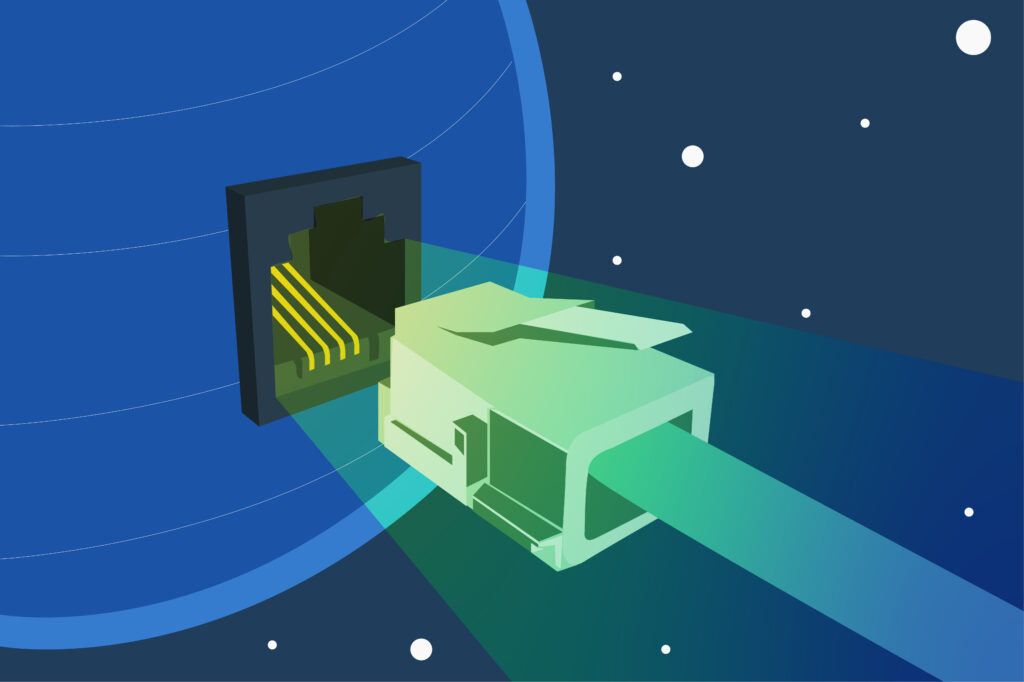In the business world, the high demand for faster data transmission comes with the increasing need for business owners to make use of modern technology. At present, the utilization of Gigabit Ethernet cables and fiber optic cables became two of the most common methods for rapid data transfers. With the help of certified fiber optic technicians, you’ll be able to tell the difference between the two innovations.
But before anything else, let’s get to know Gigabit Ethernet and fiber optics better.
Getting Acquainted with Gigabit Ethernet

According to experts, the Gigabit Ethernet is a part of the computer networking and communication standards Ethernet family. If you take a closer look at these Ethernet cables, you will see that they are made up of multiple copper wire strands. These copper wires are often twisted together by technicians in order to form four pairs of intertwined wires per cable. Within these cables, electrical signals are released in order to transmit data. Two pairs of the twisted wires are used to send information and the other two are utilized to receive information.
Identifying Whether the Device Supports Gigabit Ethernet or Not
As you can see, network devices provide the same RJ-45 connection type regardless if their Ethernet ports only support fast (10/100) or Gigabit (10/100/1000) connections. Because of this, it’s difficult to tell whether a device supports Gigabit Ethernet simply by looking at its physical form. Even though this is true, network cables are often stamped by manufacturers with information about the standards that the technology can support. With these markings, you’ll be able to confirm whether the cable you’re using is capable of operating at Gigabit Ethernet speeds or not.
Aside from that, you can also check if your network is configured to run at the Gigabit Ethernet rate by finding and opening the connection settings found on the client’s device. In Microsoft Windows, this setting is usually seen by clicking the Network and Sharing Center in the Control Panel. Once you open this, you will find a “Change adapter” settings window that allows you to right-click a connection in order to view its speed capacity.
What Happens When You Connect Slow Devices to Gigabit Ethernet?
Now that you’re aware that devices have different speed capacities, you must be curious what will happen to the device when you connect a slow one to the Gigabit port. To begin this discussion, it’s important that you understand that this does not instantly upgrade your device to use Gigabit internet. As a matter of fact, the connections to these devices will still function normally. The only difference you will see when you connect slow devices to Gigabit Ethernet is its performance—it will evidently perform at a lower rated speed.
Getting to Know Fiber Optic Technology

While Gigabit Ethernet cables are composed of copper wire strands, fiber optic cables are made up of optically pure glass strands that are as thin as the human hair. Through these glass strands, the light that the fiber optic technology generates will be able to bounce repeatedly off the walls or the cladding and travel through the cable.
Common Uses of Optical Fiber Cables
To help you get a good grasp of how fiber optic technology is used all around the world, here is a list of the most popular uses of fiber optic cables:
-
Internet Connection
It is well-known across in the field of fiber optics that fiber optic cables have the capacity to transmit a large amount of data at high speed. Because of this, the technology became widely used across business organizations for internet cables. Unlike the traditional copper wire cables, fiber optic cables can carry more data. Hence, fiber optics became a popular choice for companies that wanted to acquire high-quality internet.
-
Cable Television
Over the years, optical fiber has been used by organizations to transmit cable signals all around the world. Fiber optic cables provide its end-users higher bandwidth and faster network speed. For this reason, this innovation became an ideal choice for entities that want to transmit high definition television signals.
-
Telephone
In the past, the task of calling telephones outside or within the country was never as easy as it is today. It was because of the emergence of fiber optic technologies that faster connections and clearer conversations became possible without the worry of lags on either side. With that said, it is a known fact that fiber optics revolutionized the telecommunication industry.
-
Computer Networking
With the help of fiber optics, networking between multiple computers within a single building or across nearby structures became easier than ever. Those that made use of the technology were able to see a marked decrease in the time it took for their computers to transfer files across several networks. Because of that, this technology became commonly used by organizations to enhance their site’s computer networking.
-
Surgery and Dentistry
Apart from the ones mentioned above, fiber optic cables were also widely used in the field of medicine and research. Over the past few years, optical communication has been widely used to aid doctors that are practicing surgery and dentistry. Most of the time it was an essential part of non-intrusive surgical methods like endoscopy. Moreover, fiber optics is also maximized by users that perform microscopy and biomedical research.
-
Automotive Industry
It is beyond any doubt that fiber optic cables play a significant role in the lighting and safety features of modern automobiles. With this technology, organizations gain the ability to conserve space and provide superior lighting in vehicles. As a matter of fact, it is renowned among technicians that fiber optic technology is great for both interior and exterior lighting. Moreover, fiber optic cables were also able to prove its worth to business owners by transmitting signals between different parts of the vehicle at lightning speed. For this exact reason, this technology became invaluable for company owners that wanted to implement safety applications.
Gigabit Ethernet vs Fiber Optics

Without any doubt, Gigabit Ethernet and fiber optics have their own strengths and weaknesses. But if you take a look at the industry today, it is evident how fiber optic cables are seen by some people as the next generation in local area network (LAN) cabling. Although this is true, there are still companies with smaller networks that can’t benefit from these types of cables right away. Hence, it’s important that you are well-aware about your business needs before you let technicians install your network.
In this portion of the blog, the difference between Gigabit Ethernet cables and fiber optic cables will be discussed thoroughly. With this, you’ll be able to have a better view of what solution will work best for your company.
Network Speed
When you compare the network speed of copper Ethernet cables with the speed of optical fiber cables, you will see that there a significant difference between the two. Evidently, fiber optics have the capacity to transmit data at a faster pace. In fact, it has been renowned that a single fiber optic strand can transfer 100 Terabits of data per second. With that said, it is undeniable that the speed of optical fiber can beat the speed of Gigabit Ethernet.
Effective Distance and Signal Degradation
Every business owner wants to expand their businesses in order to increase their profitability. However, it is necessary to have a network that can still be effective over long distances in order to support your company’s growth.
Unlike Gigabit Ethernet that utilizes electrical currents, fiber optic cables make use of light signals in order to transmit data. Because of that, this technology became more effective over long distances. Although it is seen in both Gigabit Ethernet and fiber optics that their signal has the tendency to degrade over distance, it is distinct that the signal degradation is lesser in latter.
Cable Diameter and Weight
As mentioned earlier, fiber optic strands can be as thin as human hair. For this reason, it is significantly lighter than its copper Ethernet cable counterpart. With that said, it is undeniable that fiber optics is a great solution to use to have a space-saving network infrastructure.
Susceptibility to Electromagnetic Interference
Because of the fact that Ethernet cables work through electric currents, this technology became prone to radio frequency and electromagnetic interferences. When this became apparent, more and more companies started to appreciate the optical fiber’s capability to transmit data without interfering the signal that’s traveling in the other strands of the same cable. Because of this, it became a normal scenario for accredited fiber optic technicians to install fiber optic cables in areas where copper cables are suffering electromagnetic interferences.
Overall Cost
It is unmistakable that the quality of fiber optic cabling is more superior compared to Gigabit Ethernet cabling. However, when you compare the overall cost of fiber optic installations with copper wire installations, it is clear that fiber optics is significantly more expensive than its counterpart. This is the exact reason why some individuals prefer Gigabit Ethernet over optical fiber in spite of their difference in performance.



